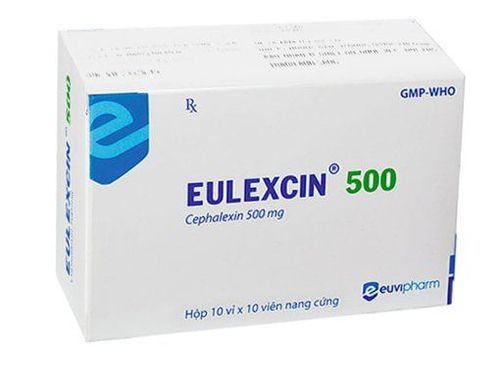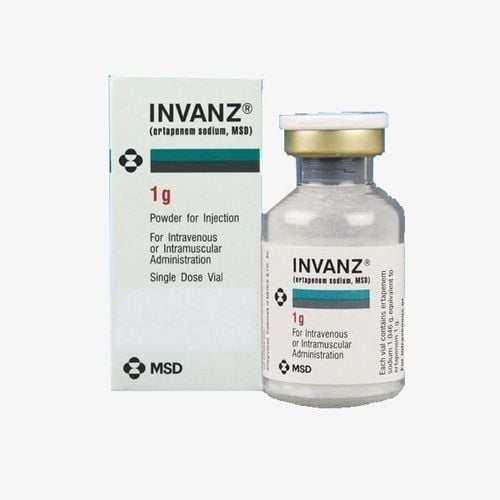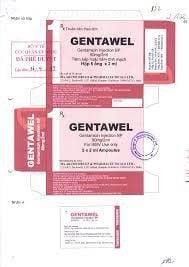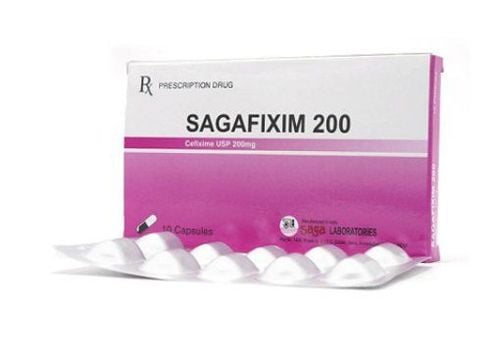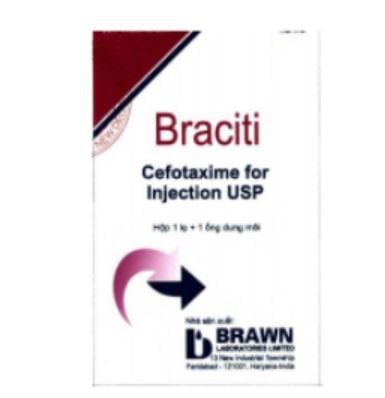This is an automatically translated article.
Zerbaxa contains 2 main ingredients: Ceftolozane (a beta-lactam antibiotic) and Tazobactam (a beta-lactamase inhibitor). Zerbaxa is indicated for the treatment of infections such as intra-abdominal infections, urinary tract infections and hospital-acquired pneumonia.1. What is Zerbaxa?
Zerbaxa contains 2 main ingredients: Ceftolozane and Tazobactam. Ceftolozane inhibits bacterial cell wall synthesis by binding to one or more penicillin-binding proteins (PBPs). This inhibits the final step of peptidoglycan synthesis in the bacterial cell wall. Tazobactam can covalently bind to some beta-lactamase enzymes and inhibit bacterial beta-lactamase activity, thereby enhancing the stability and activity of Ceftolozane. Zerbaxa is indicated for the treatment of the following infections in adults:Complicated intra-abdominal infections Acute pyelonephritis Complicated urinary tract infections Hospital-acquired pneumonia (HAP) ), including ventilator-associated pneumonia (VAP). Zerbaxa is contraindicated in patients with severe hypersensitivity to ceftolozane/tazobactam, piperacillin/tazobactam, other beta-lactam antibiotics or any of the ingredients in the formulation.
2. Dosage of the drug Zerbaxa
Dosage depends on the patient's medical condition and response to treatment. Do not increase your dose or take it for longer than prescribed because the risk of side effects may increase. The following is the dose of Zerbaxa for the treatment of some infections:
Complicated intra-abdominal infections: The recommended dose is 1g ceftolozane/0.5g tazobactam every 8 hours for 4-14 days Acute pyelonephritis, Complicated urinary tract infections: The recommended dose is 1g ceftolozane/0.5g tazobactam every 8 hours for 7 days Hospital-acquired pneumonia (HAP), including ventilator-associated pneumonia (VAP). ): The recommended dose is 2g ceftolozane/1g tazobactam every 8 hours for 8-14 days Elderly (≥ 65 years): No dose adjustment required for the elderly Renal impairment: In patients with mild renal impairment (clearance) estimated creatinine clearance >50 mL/min), no dose adjustment is required. In patients with moderate or severe renal impairment, dosage recommendations should be adjusted. For patients with end-stage renal disease on hemodialysis, a single loading dose of 500 mg Ceftolozane/250 mg Tazobactam followed 8 hours after a maintenance dose of 100 mg Ceftolozane/50 mg Tazobactam every 8 hours. During hemodialysis days, the drug should be administered as soon as possible after completion of hemodialysis. Hepatic impairment: No dose adjustment of Zerbaxa is required in patients with hepatic impairment. Children: The safety and effectiveness of Ceftolozane/Tazobactam in children and adolescents under 18 years of age have not been established.
3. Side effects of the drug Zerbaxa
Patients using Zerbaxa may experience side effects including:
Frequency > 10%:
Gastrointestinal: Abdominal pain, diarrhea Hematology: Direct positive Coombs test, thrombocytosis Others : Increased serum transaminases, fever Frequency 1 to 10%:
Cardiovascular: Atrial fibrillation, hypertension, phlebitis Dermatology: Skin rash Endocrine and metabolic: Hypokalemia, increased gamma-glutamyl transferase Gastrointestinal: Clostridium difficile diarrhea, constipation, gastritis, nausea, vomiting Hematology: Anemia, leukopenia Liver: Increased serum alkaline phosphatase Nervous system: Anxiety, dizziness, headache, loss of blood pressure sleep, intracranial hemorrhage Kidney: Renal failure syndrome Frequency <1%:
Cardiovascular: Angina pectoris, tachycardia, venous thrombosis, ischemic stroke Dermatology: Urticaria Endocrine and Metabolism: Hyperglycemia, hypokalemia, hypophosphataemiaInfusion Other: Invasive candidiasis, dyspnea, oropharyngeal candidiasis
4. Notes when using Zerbaxa
Patients taking Zerbaxa should be aware of the following:
Hypersensitivity and serious and sometimes fatal anaphylaxis have been reported in patients receiving beta-lactam antibiotics. Before administering the drug, the physician should ask the patient about previous hypersensitivity reactions to cephalosporins, penicillins or other beta-lactam antibiotics. Long-term use of Zerbaxa can lead to fungal or bacterial superinfections, including C. difficile diarrhea and pseudomembranous colitis. Renal Impairment: Ceftolozane concentrations increase as the degree of renal impairment increases. Therefore, creatinine clearance should be monitored at least daily in patients with altered renal function and dose adjusted as necessary. Pregnant women should only be used if the expected benefit outweighs the possible risk to the mother and fetus. Lactation: It is not known whether Ceftolozane and Tazobactam are excreted in human milk. Therefore, a decision must be made whether to discontinue nursing or discontinue Zerbaxa based on the benefits and risks of the drug.
5. Drug interactions of Zerbaxa
Drug interactions can change the effectiveness of treatment or increase the risk of serious side effects. Patients should inform their physician of any medications they are taking, including prescription/nonprescription drugs and herbal products. Do not start, stop, or change the dose of any medicine without first consulting your doctor. The following are some drug interactions to be aware of when using Zerbaxa:
Cephalosporin antibiotics can increase the nephrotoxic effect of Aminoglycosides and reduce Aminoglycoside serum concentrations. Probenecid may increase serum concentrations of Zerbaxa Zerbaxa may enhance the anticoagulant effect of vitamin K antagonists. Above is information on uses, dosage, side effects and precautions. while using Zerbaxa. Zerbaxa is an intravenous antibiotic and must be used according to the doctor's instructions and dosage. Patients are not allowed to self-medicate, but need to go to medical facilities for appropriate examination and indications.
Please dial HOTLINE for more information or register for an appointment HERE. Download MyVinmec app to make appointments faster and to manage your bookings easily.




